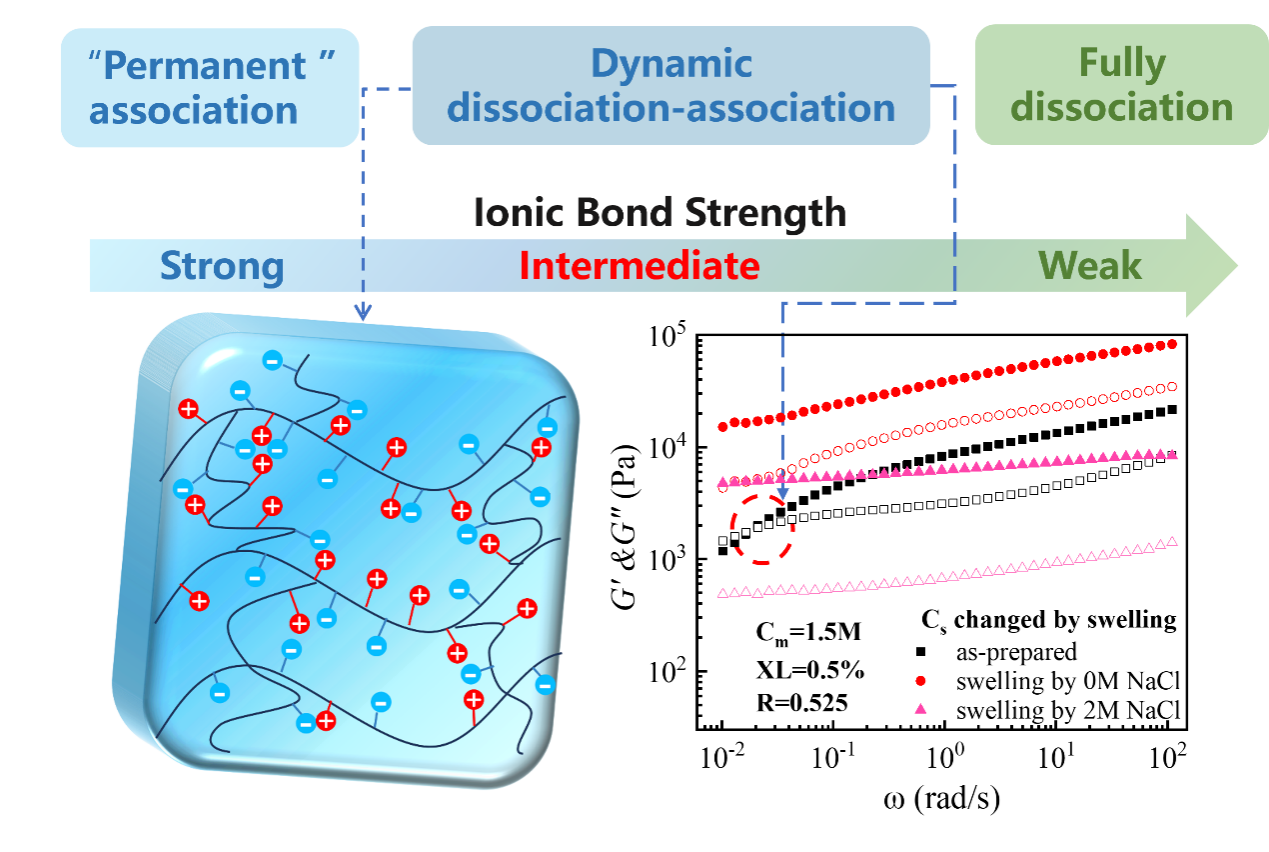Interplay between Microscopic Structures and Macroscopic Viscoelastic Properties of Polyampholyte Gels
You-Cai Xue†, Yi-Ming Yang†, and Di Jia*
Chin. J. Polym. Sci. 2024. DOI:https://doi.org/10.1007/s10118-024-3116-6
Polyampholyte gels, which have hierarchical structures, exhibit excellent self-healing properties and have great promise for biomaterials and bioengineering. We investigated the relationship between microscopic structures and macroscopic viscoelastic properties of polyampholyte gels and found three factors influencing their viscoelastic properties, including the chemical crosslinking bonds, topological entanglements controlled by monomer concentration, and the ionic bonds. Ionic strength plays a major role on the strength of ionic bonds. A crossover point of elastic modulus and loss modulus was observed in the dynamic frequency sweeps at low monomer concentration or low chemical crosslinking density for gels with intermediate strength of ionic bonds. The solid-liquid transition signaled by the crossover point is a typical feature of dynamic associated gels, representing the dynamical association-dissociation of the ionic bonds and full relaxation of the topological entanglements in the gel network. While the crossover point disappears when the ionic bonds are too weak or too strong to form “permanent” bonds. Consistently, in the non-linear yielding measurement, gels with intermediate strength of the ionic bonds are ductile and yield at very large shear strain due to the self-healing properties and the dynamic association-dissociation of the ionic bonds. But the self-healing properties disappear when the ionic bond strength is too weak or too strong. Our work reveals the mechanism of how the dynamic association-dissociation of ionic bonds influences both the linear and non-linear viscoelastic properties of the polyampholyte gels.

文章链接:https://doi.org/10.1007/s10118-024-3116-6
